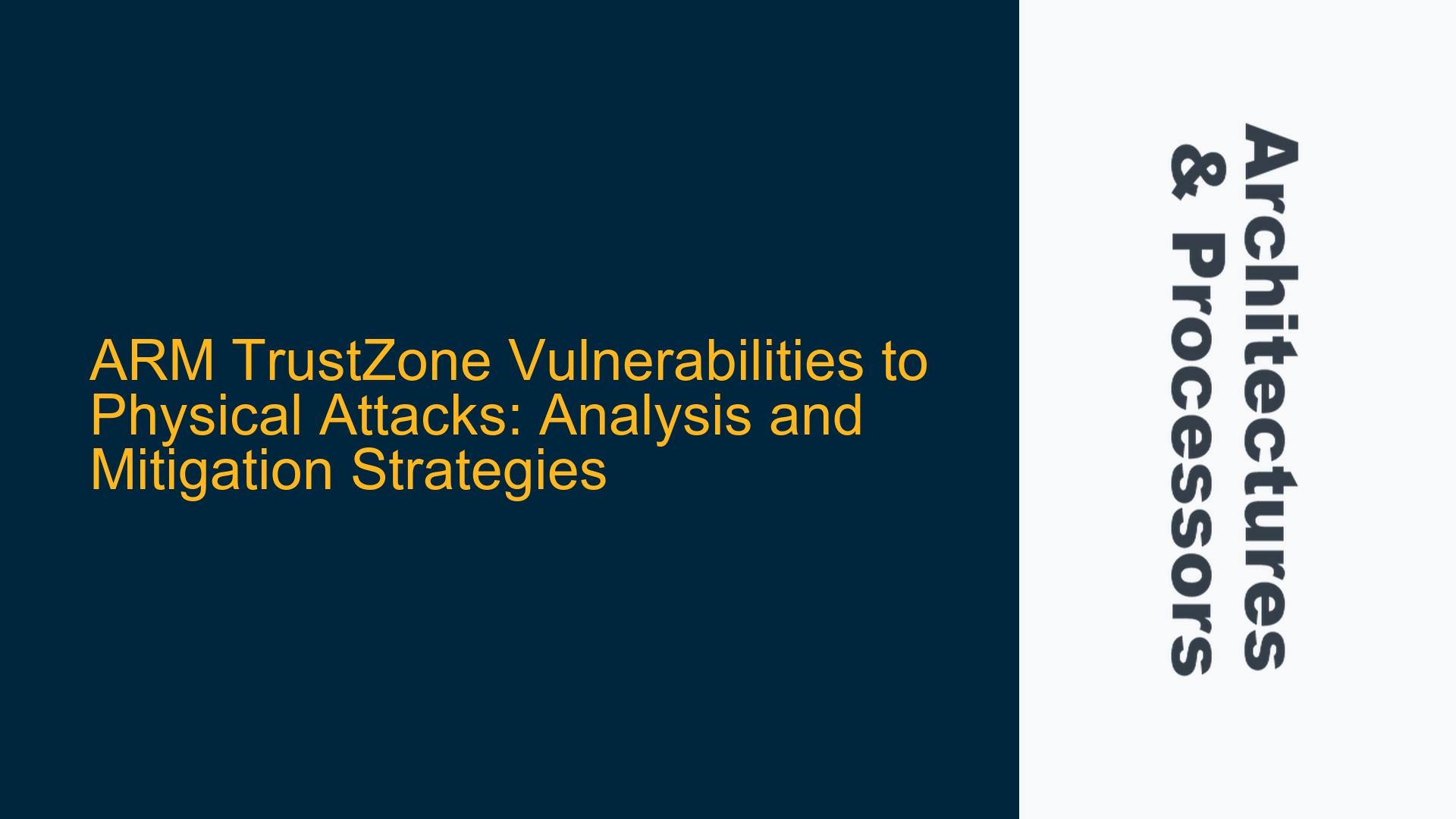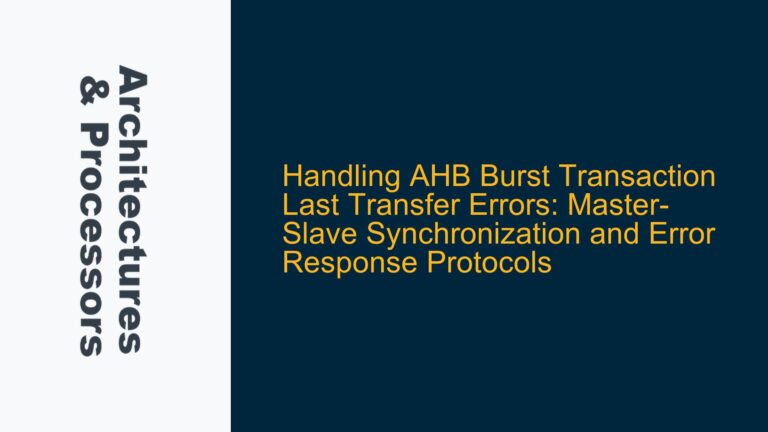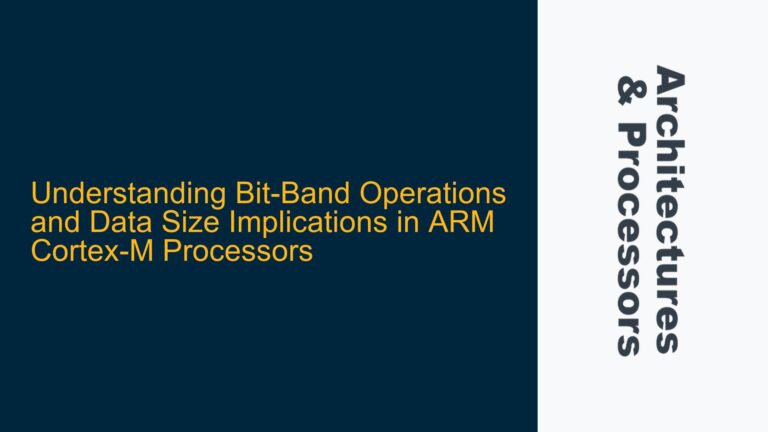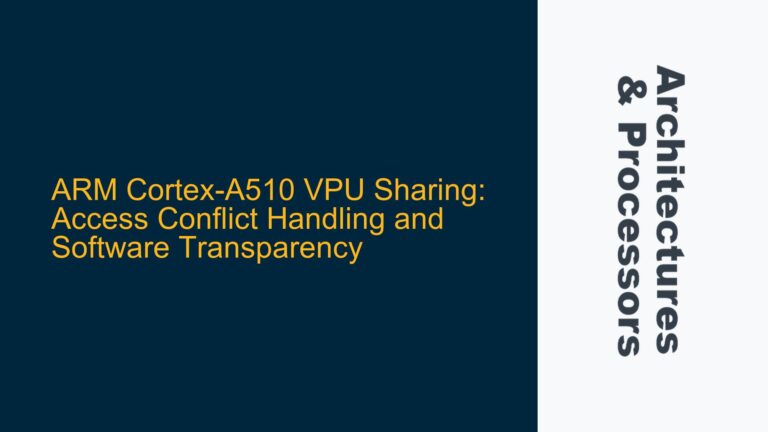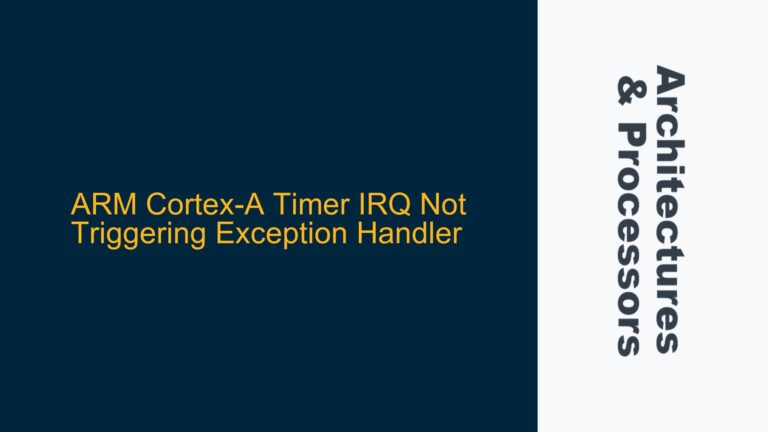ARM TrustZone’s Limited Resistance to Physical Attacks
ARM TrustZone is a hardware-based security feature integrated into ARM processors, designed to create a secure environment for executing trusted applications and protecting sensitive data. TrustZone achieves this by partitioning the system into two worlds: the Secure World and the Normal World. The Secure World is isolated from the Normal World, ensuring that sensitive operations, such as cryptographic key management or secure boot, are protected from unauthorized access or tampering by software running in the Normal World. However, while TrustZone provides robust protection against software-based attacks and basic hardware probing techniques like JTAG or trace attacks, it is not inherently resistant to advanced physical attacks.
Physical attacks involve direct interaction with the hardware, often requiring specialized equipment and expertise. These attacks can bypass the logical isolation provided by TrustZone by exploiting vulnerabilities in the physical implementation of the processor or its surrounding components. Examples of physical attacks include side-channel analysis, fault injection, and microprobing. Side-channel attacks, such as power analysis or electromagnetic analysis, exploit variations in power consumption or electromagnetic emissions to extract sensitive information. Fault injection attacks introduce errors into the system during operation to disrupt secure processes or reveal secrets. Microprobing involves physically accessing the chip to read or manipulate data directly from the silicon.
The limitations of TrustZone in resisting physical attacks stem from its focus on logical isolation rather than physical hardening. While TrustZone ensures that software running in the Normal World cannot access Secure World resources, it does not inherently protect against physical tampering or side-channel leakage. The effectiveness of TrustZone against physical attacks depends heavily on the implementation of additional hardware and software countermeasures, such as secure boot, tamper detection mechanisms, and cryptographic shielding.
Hardware Design and Implementation Weaknesses
The susceptibility of ARM TrustZone to physical attacks is influenced by several factors related to hardware design and implementation. One critical factor is the quality of the physical security measures integrated into the system-on-chip (SoC) design. Many ARM-based SoCs are designed for general-purpose applications, where cost and performance are prioritized over security. In such cases, the physical security features may be insufficient to withstand sophisticated attacks.
For example, side-channel attacks exploit variations in power consumption, electromagnetic emissions, or timing behavior to infer sensitive information. These attacks can be mitigated through techniques such as power analysis-resistant cryptographic algorithms, randomized execution timing, and electromagnetic shielding. However, implementing these countermeasures requires additional hardware resources and design effort, which may not be feasible in all applications.
Fault injection attacks, another class of physical attacks, involve introducing errors into the system to disrupt secure operations or reveal secrets. These attacks can be mitigated through error detection and correction mechanisms, redundant execution, and tamper-resistant packaging. However, these countermeasures also increase the complexity and cost of the hardware design.
Microprobing attacks, which involve physically accessing the chip to read or manipulate data, can be mitigated through advanced packaging techniques, such as tamper-evident coatings, mesh sensors, and active shielding. However, these techniques are typically reserved for high-security applications due to their cost and complexity.
The effectiveness of TrustZone against physical attacks also depends on the integration of secure boot and trusted execution environments (TEEs). Secure boot ensures that only authenticated and authorized software can execute in the Secure World, while TEEs provide a secure runtime environment for trusted applications. However, these mechanisms rely on the integrity of the underlying hardware, which can be compromised by physical attacks.
Mitigation Strategies for Enhancing Physical Security
To enhance the resistance of ARM TrustZone to physical attacks, a combination of hardware and software countermeasures must be implemented. These countermeasures should address the specific vulnerabilities associated with side-channel analysis, fault injection, and microprobing.
For side-channel attacks, cryptographic algorithms should be designed to minimize information leakage through power consumption, electromagnetic emissions, or timing behavior. Techniques such as masking, blinding, and randomized execution can help mitigate these attacks. Additionally, hardware-based countermeasures, such as noise injection and electromagnetic shielding, can reduce the effectiveness of side-channel analysis.
Fault injection attacks can be mitigated through error detection and correction mechanisms, redundant execution, and tamper-resistant packaging. Error detection and correction mechanisms, such as parity checks and cyclic redundancy checks (CRCs), can detect and correct errors introduced by fault injection. Redundant execution involves executing critical operations multiple times and comparing the results to detect inconsistencies. Tamper-resistant packaging, such as epoxy coatings and mesh sensors, can detect and respond to physical tampering.
Microprobing attacks can be mitigated through advanced packaging techniques, such as tamper-evident coatings, mesh sensors, and active shielding. Tamper-evident coatings provide visual evidence of tampering, while mesh sensors detect physical intrusion. Active shielding involves embedding sensors within the chip to detect and respond to physical attacks.
In addition to hardware countermeasures, software-based techniques can enhance the security of TrustZone. Secure boot ensures that only authenticated and authorized software can execute in the Secure World, while TEEs provide a secure runtime environment for trusted applications. These mechanisms rely on the integrity of the underlying hardware, which can be compromised by physical attacks. Therefore, it is essential to implement hardware-based root-of-trust mechanisms, such as secure elements or hardware security modules (HSMs), to protect the integrity of the secure boot process and TEEs.
Finally, regular security assessments and penetration testing should be conducted to identify and address vulnerabilities in the hardware and software implementation. These assessments should include both logical and physical attack vectors to ensure comprehensive protection against all potential threats.
In conclusion, while ARM TrustZone provides robust protection against software-based attacks and basic hardware probing techniques, it is not inherently resistant to advanced physical attacks. The effectiveness of TrustZone against physical attacks depends on the implementation of additional hardware and software countermeasures, such as secure boot, tamper detection mechanisms, and cryptographic shielding. By addressing the specific vulnerabilities associated with side-channel analysis, fault injection, and microprobing, it is possible to enhance the physical security of ARM TrustZone and protect sensitive data from sophisticated attacks.
